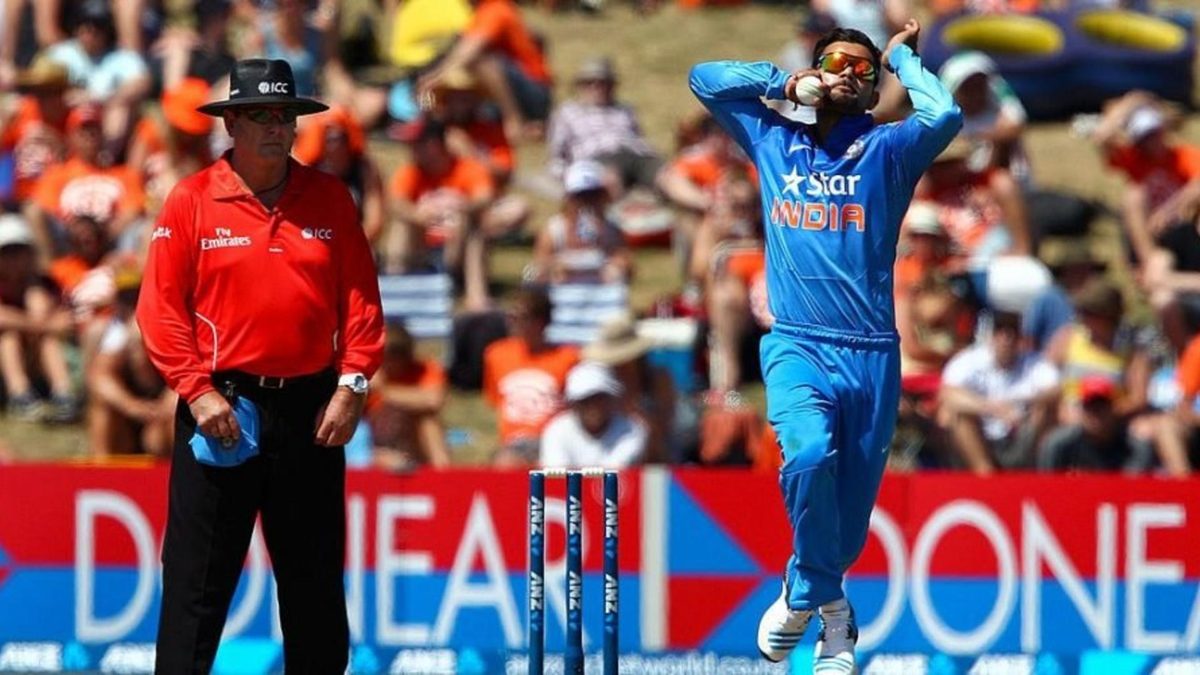
Virat Kohli, currently the world’s second-best T20I batsman, was once India’s highest ranked T20I all-rounder. A throwback to what exactly happened in the rankings table.
Subscribe to the Wisden Cricket YouTube channel for post-match awards, player interviews, analysis and much more.
Known more for his batting skills, Kohli, who introduced himself as “right-hand middle-order batsman, right-arm quick bowler” in the ICC under-19 ODI World Cup in 2008, was seen as a potential part-timer in the early stages of his career, in a format that was still not taken seriously enough.
His most (in)famous over in T20 cricket came in the IPL, where Albie Morkel smashed him for 4, 6, 4, 6, 2, 6 in the penultimate over of a steep run-chase in IPL 2012. At international level, Kohli was surprisingly a more regular option for India between 2011 and 2013. Between August 2011 and September 2013, Kohli bowled in 11 of the 17 matches he played, four times bowling up to three overs in a game.
Remember how your favourite superstars looked like as teenagers? 👦
Presenting the 2008 U19 @cricketworldcup introductions 📽️
Which one’s your favourite? 😄 pic.twitter.com/Sk4wnu4BNs
— ICC (@ICC) November 4, 2020
At the end of October 2013, India had one entry at No.2 in the ICC rankings for T20I all-rounders – Yuvraj Singh. However, there was one more in the top 15 – Virat Kohli at No.14 with a rating of 172. Kohli was No.3 at the time in the ICC T20I batting rankings with a rating of 749. He wasn’t in the top 100 in the ICC T20I bowling rankings.
The lack of players who actively played the all-round role in the format early on kept Kohli as high in the ICC rankings for all-rounders.
It took Kohli three more years to roll his arm over in T20Is. In the 2016 T20 World Cup semi-final, Kohli was called up to bowl in the 14th over of the West Indies innings with them needing 77 off 42 balls to win. Brushing off the rust from his shoulders, Kohli picked up a wicket with his very first delivery, sending back the well-set Johnson Charles for 52 to give India a breakthrough.
He finished the over pretty well – 1-0-4-1 – as West Indies’ target got steeper. However, his overall figures took a hit after he was tasked with defending eight runs off the final over ahead of Ravichandran Ashwin. It was his moment of truth.
He jogged in to bowl at Andre Russell in the final over of a T20 World Cup semi-final and conceded a four and six off the third and fourth ball, with West Indies sealing a win. In all the Ajinkya Rahane slandering by fans post the defeat, the decision to bowl Kohli over Ashwin in the final over is probably forgotten.
He would not bowl for India in the format ever again, but in the ICC rankings update on November 3, 2017, there came a minor surprise – Virat Kohli was ranked No.10 in the T20I all-rounders’ category with a rating of 191. Yuvraj had slipped to No.19 and Kohli, who hadn’t bowled a ball in the past one and a half years in the format, became India’s highest ranked all-rounder!
By December 2017 though, he had slipped to No.13 and by New Year, dropped to No.15 with his rating at 168.
Kohli played in two T20Is after November 3 until New Year – made 65 in one and the other was a rain-shortened eight-over game against New Zealand where he did not bowl and scored 13 off 6 with the bat. So how did his ratings dip in the batting and all-rounder rankings table?
The ICC website explains the ratings, and thereby the rankings are decided by a “series of calculations leading to a sophisticated moving average”. The all-rounder index is calculated by multiplying the player’s batting and bowling points and dividing by 1000.
The ratings do not penalise a batsman who hasn’t batted, but a bowler who does not bowl in a high-scoring game loses ratings.
“If the opposition are bowled out for less than 150, then a bowler who has not bowled is not penalised (conditions obviously suited the other bowlers, and his services weren’t needed). But if the opposition makes a big total, then bowlers who don’t bowl in the innings lose points,” the ICC rankings FAQs detail.
He isn’t India’s No.1 all-rounder in the format now, although as late as November 2019, he continued to be above the likes of Hardik Pandya and Ravindra Jadeja in the all-rounder rankings in T20Is. Kohli is now 31st in the ICC all-rounder category, a backward jump that came as a combination of different factors including ICC giving T20I status for all matches between ICC member countries from 1 January 2019.
But for the sake of nostalgia, we can always go back to the ICC all-rounders’ rankings table of 2017, with “right-arm quick” Virat Kohli featuring in the top 10.








